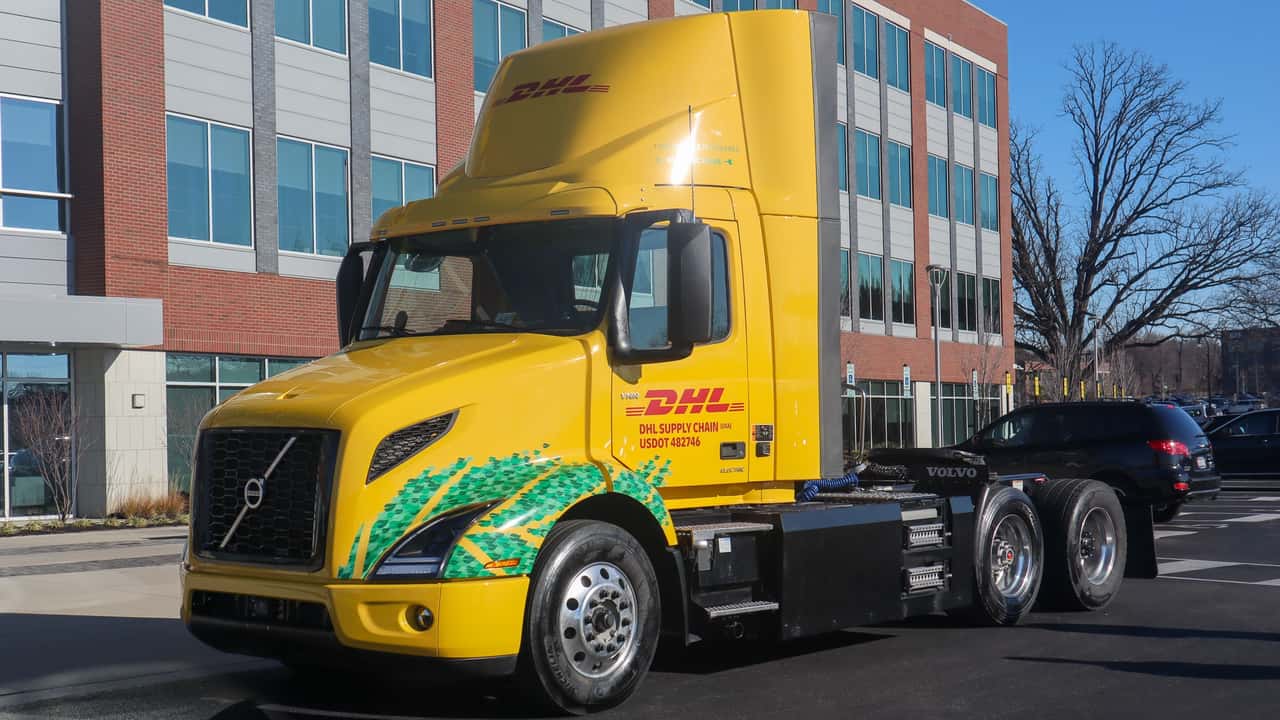When it comes to electrified issues, Ohio sometimes gets left behind. Whether that’s certain vehicles, state-level tax incentives or even a charging network as expansive as that of other states, we all collectively get skipped. It’s cool. We’re used to it. After all, California’s the biggest market for anything electrified. But that doesn’t mean Ohio—and other states that aren't California—are not somehow pivotal to understanding how and where we can get away from gas.
Many companies get this. Take DHL, the massive international logistics and shipping company with a regional headquarters in Westerville, Ohio. Shipping accounts for a lot of emissions. So as DHL attempts to electrify its fleets to address that problem, it's open about how states like Ohio can help it understand what the actual use cases are for EVs in the rest of the country. DHL invited me to Westerville to take a gander at an example of one of its new completely electric trucks—and hear about its plans to electrify shipping.
DHL doesn’t do door-to-door parcels anymore here in the United States. No, it lost that battle in the late 2000s to UPS and FedEx. But DHL still does international deliveries, where it then turns over its packages to USPS, UPS, or FedEx letting them finish out those last packages. It also does contract shipping, where it manages curated clients shipping large items from one space to another. These new Class 8 tractor-trailers are meant to serve as last-mile delivery solutions for the clients it has.
The one on display in Ohio is one of the 17 trucks—including five compressed natural gas ones—it plans to have in service by the end of spring 2024.

I’ll admit, that might not sound like a lot of trucks, but DHL’s fleet isn’t super big. DHL’s President of Transportation, Jim Monkmeyer explained that it’s only about 1,500 trucks or so it has in its nationwide fleet, which currently do the same purpose as the EV trucks it has here. (And DHL already has 30,000 light-to-heavy duty EVs deployed all over the world.)
Keep in mind, these EV trucks aren’t meant to be long-haul, cross-country type operations, but more so last-mile deliveries meant for cities and other shorter runs. So in proportion, that’s not too bad. These trucks have tangible benefits, too. DHL found an EV truck consumed about 50% less energy than a diesel one when put on the same job. Switching to electric makes a lot of sense.
The truck itself on display at DHL’s Westerville campus was a fairly standard Volvo VNR class 8 truck, shown off in the smaller four-module battery pack. DHL’s Senior Director of Asset Management, Ted Valin, said that the company expects to get about 150 miles of range from this truck, and closer to 225 miles of range; enough to handle the local routes that DHL has in mind for the truck. DHL added that it has two Freightliner eCascadias entering service, which also have about the same range and performance as the battery-powered Volvo VNR. The company says the electric trucks get up to 250 miles on a single charge, which works well for regional hauling.
“One of the unique things we’re doing is testing them outside of the state of California,” Valin said. This testing allows the company to learn just what these trucks will do when faced with concerns like cold weather or snow, things that aren’t as much of an issue in the Golden State.
With those limitations in mind, DHL can effectively tweak its routes to ensure the truck will always have enough range to finish the job. “We’re gonna have [the trucks] in Columbus, Charlotte, Philadelphia, and even Middletown, Ohio,” Valin added.

Of course, ensuring those routes fall within their scope is key. Right now, DHL isn’t all that keen on investing in or relying on public charging infrastructure. The Volvo VNR uses the same CCS 1 combo port just like any other EV on the market. But for now, all of the charging for these vehicles will be done at the vehicle’s home base. DHL says that as the largest contract shipper in the US, its advantages are that it can effectively manage its charging needs, from dispatch. So right now, the company doesn’t really need public charging at all.
But plenty of trucking companies that do more long-haul freight work are getting into the charging game; this summer the Wall Street Journal reported Daimler Truck is working with renewable company NextEra Energy on a network designed to support the trucking industry. Right now, we're even seeing automakers not traditionally involved in "fueling" get into the charging game. It seems likely trucking companies will need to do something similar, too.
Perhaps most famously, PepsiCo has a small fleet of Tesla Semi trucks posting encouraging range results, and one large Coca-Cola distributor is also using Daimler Freightliner eCascadias too. These efforts are still in the early phases, but they may show eventual promise.
My conversation with Valin ended on a high note. He called himself a “true believer” in electrification, speaking on how much he loves his Tesla. The low maintenance allure of his EV is part of the reason he believes that these new EV Class 8 trucks will work out to be superior to the traditional ICE trucks.
For the handful already in DHL’s fleet, Monkmeyer and Valin both claimed that drivers appreciated how quiet, comfortable and quick these trucks were, allowing drivers to end shifts with less fatigue. In theory, the benefits of the truck itself could lead to DHL attracting and retaining drivers in a world where truck drivers are in short supply.
Gallery: Volvo VNR Electric
DHL plans to electrify 30% of its fleet by 2030. Could electric trucks make shipping cheaper and greener? It certainly beats the alternative.

